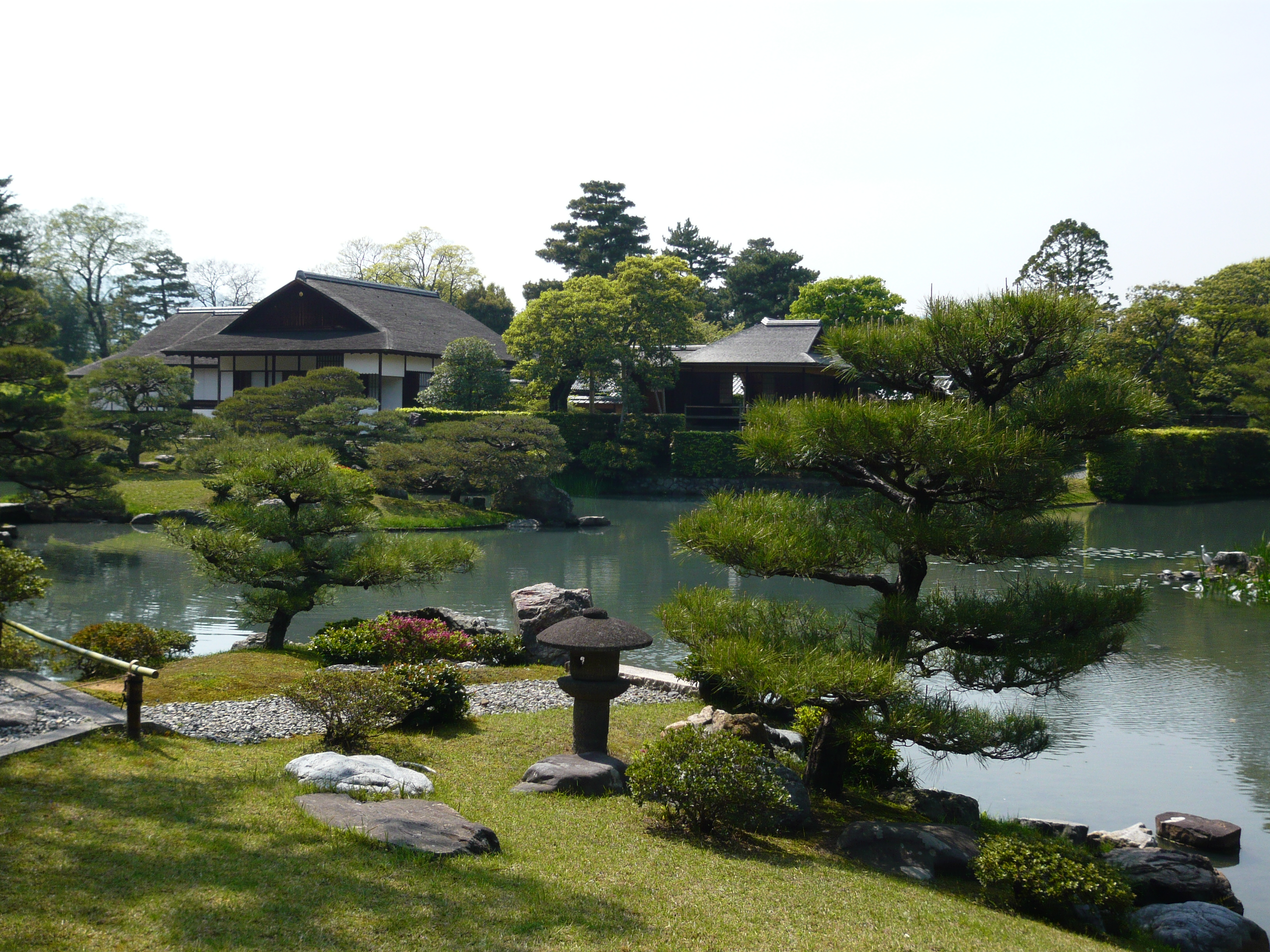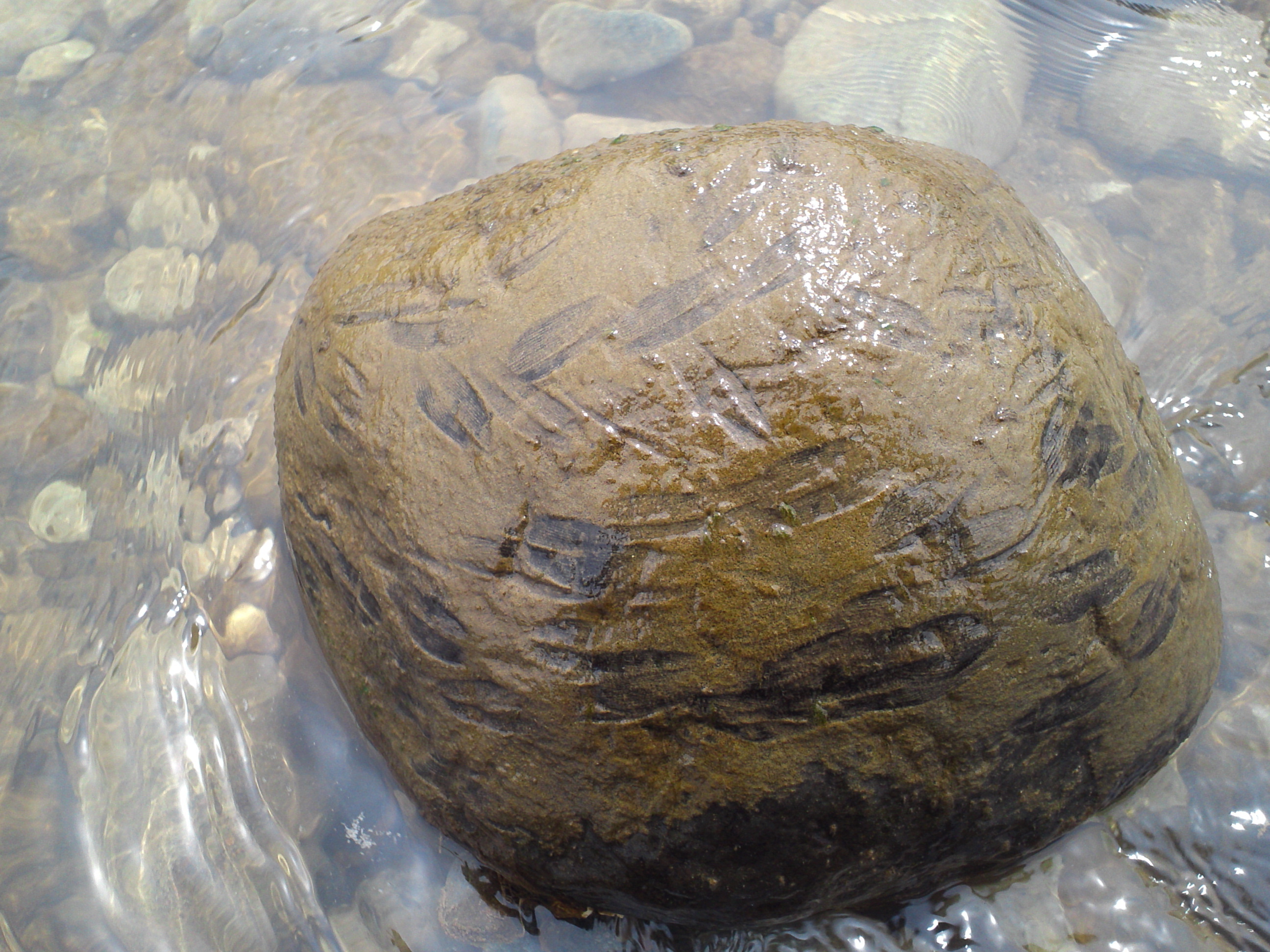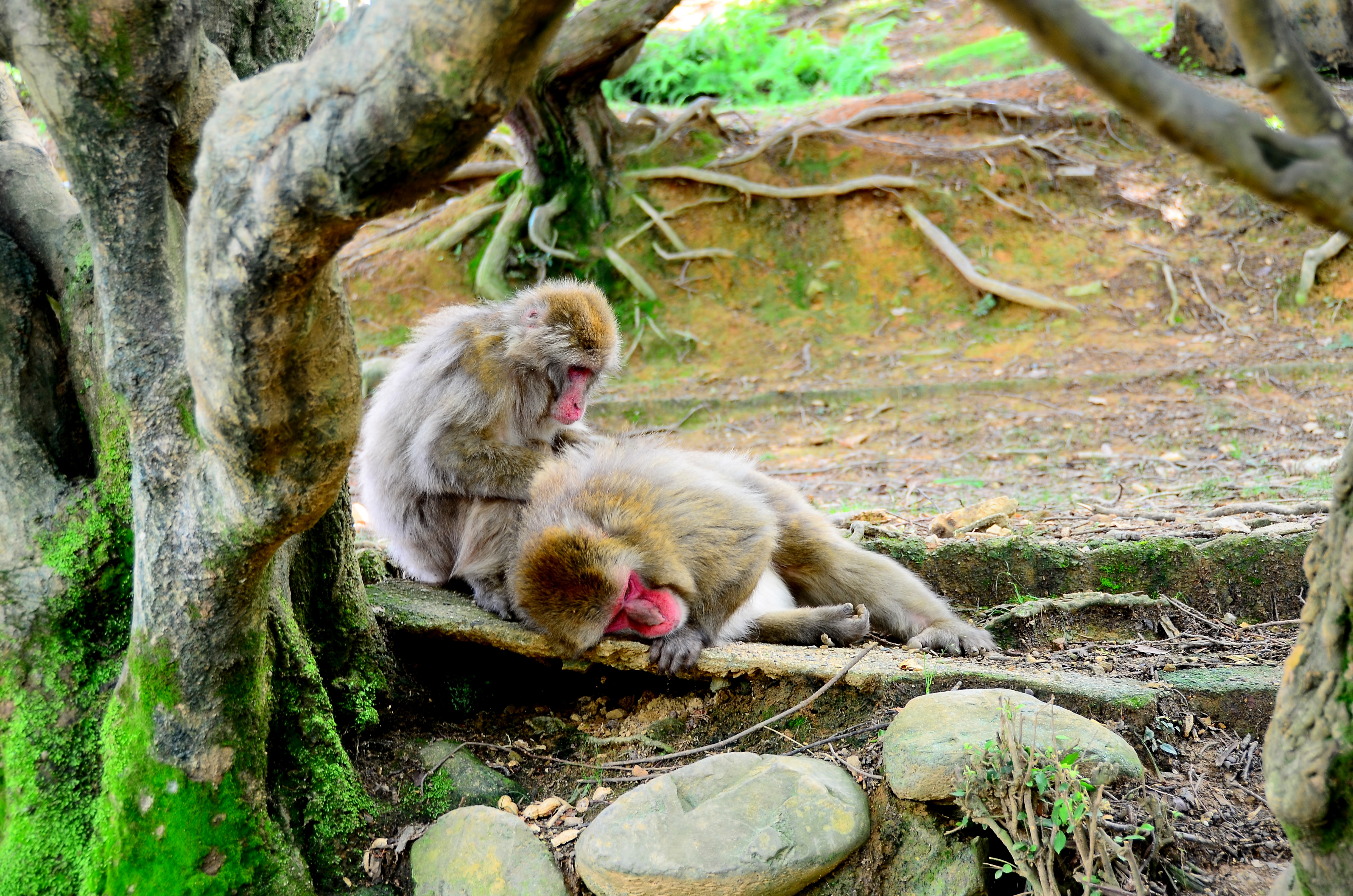|
Katsura River
The is a continuation of two other rivers, the Hozu River, a small, speedy river which begins in the mountains near Kameoka and then slithers through the mountains separating Kameoka and Kyoto; and the Ōi River (大堰川 ''Ōi-gawa''), which emerges from those mountains and expands into a shallow, slow-flowing river until Togetsukyo Bridge in Arashiyama. From that point forward, the river is referred to as the Katsura River, and its flow continues for several kilometers through Kyoto Prefecture until it joins the Kamo and Uji rivers. The Katsura River area features some of the oldest shrines in Kyoto and Japan, such as Matsuo Shrine, and, as a counterpoint to the channelled Kamo River, supports acres of agricultural area on its flood plain. It also is known for its summer supply of '' ayu'' and is a popular place for holding barbecues. See also * Katsura, Kyoto Katsura (桂) is a neighborhood in Nishikyo-ku, in the western part of the city of Kyoto, Japan. Predominant ... [...More Info...] [...Related Items...] OR: [Wikipedia] [Google] [Baidu] |
Yodo River
The , also called the Seta River (瀬田川 ''Seta-gawa'') and the Uji River (宇治川 ''Uji-gawa'') at portions of its route, is the principal river in Osaka Prefecture on Honshu, Japan. The source of the river is Lake Biwa in Shiga Prefecture to the north. The Yodo River, usually called the Seta River in Shiga Prefecture, begins at the southern outlet of the lake in Ōtsu. There is a dam there to regulate the lake level. Further downstream, the Seta flows into Kyoto Prefecture and its name changes to the Uji River. It then merges with two other rivers, the Katsura River and the Kizu River in Kyoto Prefecture. The Katsura has its headwaters in the mountains of Kyoto Prefecture, while the Kizu comes from Mie Prefecture. From the three-river confluence, the river is called the Yodo River, which flows south, through Osaka, and on into Osaka Bay. In Osaka, part of the river has been diverted into an artificial channel; the old course in the heart of Osaka is called the Kyū-Yodo ... [...More Info...] [...Related Items...] OR: [Wikipedia] [Google] [Baidu] |
Katsura, Kyoto
Katsura (桂) is a neighborhood in Nishikyo-ku, in the western part of the city of Kyoto, Japan. Predominantly residential in character the district is situated and the western bank of the Katsura River. The neighborhood is renowned as the location of the Katsura Imperial Villa, a historic garden maintained by the Imperial Household Agency. Katsura is accessible from Katsura Station on the Hankyu Kyoto Line by train, and by buses offered by, among other organizations, the Kyoto Municipal Transportation Bureau. References See also * Katsura River The is a continuation of two other rivers, the Hozu River, a small, speedy river which begins in the mountains near Kameoka and then slithers through the mountains separating Kameoka and Kyoto; and the Ōi River (大堰川 ''Ōi-gawa''), whi ... Geography of Kyoto {{Kyoto-geo-stub ... [...More Info...] [...Related Items...] OR: [Wikipedia] [Google] [Baidu] |
Barbecue
Barbecue or barbeque (informally BBQ in the UK, US, and Canada, barbie in Australia and braai in South Africa) is a term used with significant regional and national variations to describe various cooking methods that use live fire and smoke to cook the food. The term is also generally applied to the devices associated with those methods, the broader cuisines that these methods produce, and the meals or gatherings at which this style of food is cooked and served. The cooking methods associated with barbecuing vary significantly but most involve outdoor cooking. The various regional variations of barbecue can be broadly categorized into those methods which use direct and those which use indirect heating. Indirect barbecues are associated with North American cuisine, in which meat is heated by roasting or smoking over wood or charcoal. These methods of barbecue involve cooking using smoke at low temperatures and long cooking times, for several hours. Elsewhere, barbecuing more co ... [...More Info...] [...Related Items...] OR: [Wikipedia] [Google] [Baidu] |
Ayu Sweetfish
The ayu sweetfish (''Plecoglossus altivelis''), or sweetfish, is a species of fish. It is the only species in the genus ''Plecoglossus'' and family Plecoglossidae. It is a relative of the smelts and other fish in the order Osmeriformes. Native to East Asia, it is distributed in the northwestern Pacific Ocean along the coast of Hokkaidō in Japan southward to the Korean Peninsula, China, Hong Kong and northern Vietnam. It is amphidromous, moving between coastal marine waters and freshwater lakes and rivers. A few landlocked populations also exist in lakes in Japan such as Biwa. Original wild populations in Taiwan became extinct in 1968 due to pollution and present extent populations were reintroduced from Japan in the 1990s. The name "sweetfish" was inspired by the sweetness of its flesh. In reference to its typical one-year lifespan, it is also written as ("year-fish"). [...More Info...] [...Related Items...] OR: [Wikipedia] [Google] [Baidu] |
Agriculture
Agriculture or farming is the practice of cultivating plants and livestock. Agriculture was the key development in the rise of sedentary human civilization, whereby farming of domesticated species created food surpluses that enabled people to live in cities. The history of agriculture began thousands of years ago. After gathering wild grains beginning at least 105,000 years ago, nascent farmers began to plant them around 11,500 years ago. Sheep, goats, pigs and cattle were domesticated over 10,000 years ago. Plants were independently cultivated in at least 11 regions of the world. Industrial agriculture based on large-scale monoculture in the twentieth century came to dominate agricultural output, though about 2 billion people still depended on subsistence agriculture. The major agricultural products can be broadly grouped into foods, fibers, fuels, and raw materials (such as rubber). Food classes include cereals (grains), vegetables, fruits, cooking oils, meat, milk, ... [...More Info...] [...Related Items...] OR: [Wikipedia] [Google] [Baidu] |
Matsuo Shrine
, formerly , is a Shinto shrine located at the far western end of Shijō Street, approximately 1.3 kilometers south of the Arashiyama district of Kyoto. It is home to a spring at the base of the mountain, Arashiyama, that is believed to be blessed. It is said that during the move of the capital from Nara to Kyoto, a noble saw a turtle bathing under the spring's waterfall and created a shrine there. It is one of the oldest shrines in the Kyoto area, its founding extending back to 700 CE. The restorative properties of the spring bring many local sake and miso companies to the shrine for prayers that their product will be blessed. The shrine also serves a ''kinpaku miki'' (gold leaf filled blessed sake) during ''hatsumōde''. History The shrine became the object of Imperial patronage during the early Heian period. In 965, Emperor Murakami ordered that Imperial messengers were sent to report important events to the guardian ''kami'' of Japan. These ''heihaku'' were initially present ... [...More Info...] [...Related Items...] OR: [Wikipedia] [Google] [Baidu] |
Uji River
The , also called the Seta River (瀬田川 ''Seta-gawa'') and the Uji River (宇治川 ''Uji-gawa'') at portions of its route, is the principal river in Osaka Prefecture on Honshu, Japan. The source of the river is Lake Biwa in Shiga Prefecture to the north. The Yodo River, usually called the Seta River in Shiga Prefecture, begins at the southern outlet of the lake in Ōtsu. There is a dam there to regulate the lake level. Further downstream, the Seta flows into Kyoto Prefecture and its name changes to the Uji River. It then merges with two other rivers, the Katsura River and the Kizu River in Kyoto Prefecture. The Katsura has its headwaters in the mountains of Kyoto Prefecture, while the Kizu comes from Mie Prefecture. From the three-river confluence, the river is called the Yodo River, which flows south, through Osaka, and on into Osaka Bay. In Osaka, part of the river has been diverted into an artificial channel; the old course in the heart of Osaka is called the Kyū-Yodo ... [...More Info...] [...Related Items...] OR: [Wikipedia] [Google] [Baidu] |
Kamo River
The is located in Kyoto Prefecture, Japan. The riverbanks are popular walking spots for residents and tourists. In summer, restaurants open balconies looking out to the river. There are walkways running alongside the river, and some stepping stones that cross the river. The water level of the river is usually relatively low; less than one meter in most places. During the rainy season, however, the walkways sometimes flood in their lower stretches. Geography The Kamo River has its source in the mountains in the area of Mount Sajikigatake, around the boundary of Kumogahata village and Keihoku village in the northern ward of Kyoto. Flowing into the Kyoto Basin from the city area called Kamigamo in the same northern ward of the city, from there it bends south-east and, around the spot known as Demachi in the Kamigyō (or "Upper Kyoto" ward), joins with the Takano River which flows down from the northeastern direction, and there changes direction to due south through Kyoto' ... [...More Info...] [...Related Items...] OR: [Wikipedia] [Google] [Baidu] |
Arashiyama
is a district on the western outskirts of Kyoto, Japan. It also refers to the mountain across the Ōi River, which forms a backdrop to the district. Arashiyama is a nationally designated Historic Site and Place of Scenic Beauty. Notable tourist sites * Arashiyama Bamboo Grove *The Iwatayama Monkey Park on the slopes of Arashiyama. Over 170 monkeys live at the park. While the monkeys are wild, they have become accustomed to humans. The park is on a small mountain not far from the Saga-Arashiyama rail station. Visitors can approach and photograph the monkeys. At the summit is a fenced enclosure where visitors can feed the monkeys. *The "Moon Crossing Bridge" (渡月橋, Togetsukyō), notable for its views of cherry blossoms and autumn colors on the slopes of Arashiyama. *The tombstone of the Heike courtesan Kogo of Sagano. *Tenryū-ji, the main temple of one of the 15 branches of the Rinzai school, one of the two main sects of Zen Buddhism in Japan. *The hamlet of Kiyotaki, ... [...More Info...] [...Related Items...] OR: [Wikipedia] [Google] [Baidu] |
Japan
Japan ( ja, 日本, or , and formally , ''Nihonkoku'') is an island country in East Asia. It is situated in the northwest Pacific Ocean, and is bordered on the west by the Sea of Japan, while extending from the Sea of Okhotsk in the north toward the East China Sea, Philippine Sea, and Taiwan in the south. Japan is a part of the Ring of Fire, and spans Japanese archipelago, an archipelago of List of islands of Japan, 6852 islands covering ; the five main islands are Hokkaido, Honshu (the "mainland"), Shikoku, Kyushu, and Okinawa Island, Okinawa. Tokyo is the Capital of Japan, nation's capital and largest city, followed by Yokohama, Osaka, Nagoya, Sapporo, Fukuoka, Kobe, and Kyoto. Japan is the List of countries and dependencies by population, eleventh most populous country in the world, as well as one of the List of countries and dependencies by population density, most densely populated and Urbanization by country, urbanized. About three-fourths of Geography of Japan, the c ... [...More Info...] [...Related Items...] OR: [Wikipedia] [Google] [Baidu] |
Togetsukyo Bridge
is a district on the western outskirts of Kyoto, Japan. It also refers to the mountain across the Ōi River, which forms a backdrop to the district. Arashiyama is a nationally designated Historic Site and Place of Scenic Beauty. Notable tourist sites * Arashiyama Bamboo Grove *The Iwatayama Monkey Park on the slopes of Arashiyama. Over 170 monkeys live at the park. While the monkeys are wild, they have become accustomed to humans. The park is on a small mountain not far from the Saga-Arashiyama rail station. Visitors can approach and photograph the monkeys. At the summit is a fenced enclosure where visitors can feed the monkeys. *The "Moon Crossing Bridge" (渡月橋, Togetsukyō), notable for its views of cherry blossoms and autumn colors on the slopes of Arashiyama. *The tombstone of the Heike courtesan Kogo of Sagano. *Tenryū-ji, the main temple of one of the 15 branches of the Rinzai school, one of the two main sects of Zen Buddhism in Japan. *The hamlet of Kiyotaki, ... [...More Info...] [...Related Items...] OR: [Wikipedia] [Google] [Baidu] |







